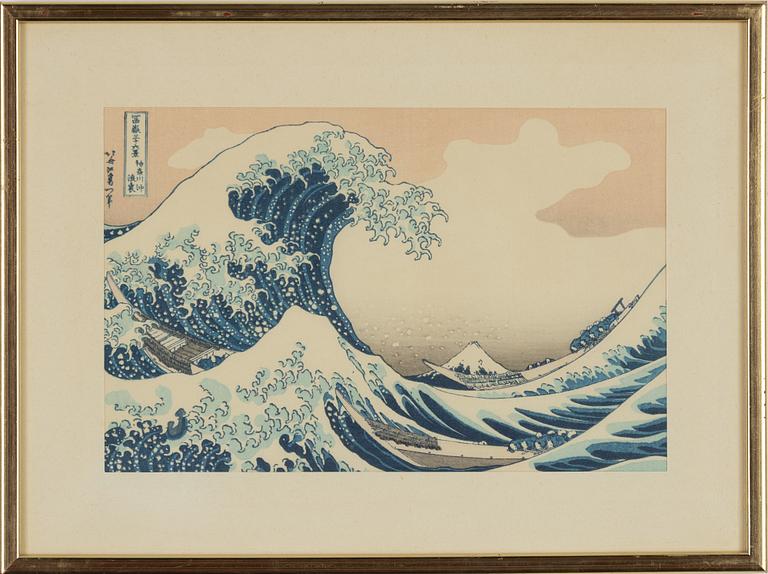Katsushika Hokusai, after
Katsushika Hokusai, after, a set of four woodblock prints in colours, later part of the 20th Century.
1: The Great Wave off Kanagawa (神奈川沖浪裏); 12: Sunset across the Ryōgoku bridge from the bank of the Sumida River at Onmayagashi (御厩川岸より両国橋夕陽見); 26: Hodogaya on the Tōkaidō (東海道保土ケ谷); 27: Tama River in Musashi Province (武州玉川); 18 x 28 cm (within passepartout).
The general impression is good. Not examined out of frame.
Artist
Katsushika Hokusai (1760-1849) is considered one of the greatest artists in Japanese history, and one of the important masters of the Japanese woodblock print. He was the son of the mirror maker Nakajima Issai and was born in 1760 into a family of craftsmen where he reportedly started drawing as early as six years old. Trained as a woodcarver, Hokusai was an apprentice to the artist and printmaker Katsugawa Shunsho, but was forced to quit seven years later as he had his own ideas about art. Hokusai questioned the strict Japanese principles for images and tested new techniques and perspectives and was not recognized until his 40s. He created the series 'Fugaku sanju-rokkei' (Thirty-Six Views of Mount Fuji), between 1830-1832, over seventy years old. The series actually consists of 46 views, including the world famous 'Under the waves off Kanagawa'. Hokusai's pictures came to Europe, along with the works of other Japanese woodcut artists, in the latter part of the 19th century and came to influence many of the Western world's most important artists.
Read more





































